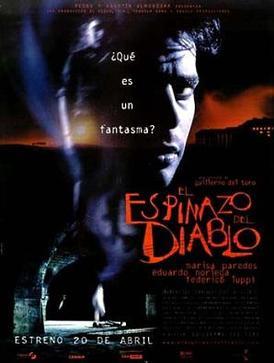Guillermo del Toro’s early movies are thought-provoking and somewhat depressing. The Devil’s Backbone, like Pan’s Labyrinth, puts children in the way of adult political unrest and war. I suspect that sensitive people watching such movies can easily imagine that they could have been put in such circumstances, were things different. Having said that, The Devil’s Backbone works as a sad, gothic horror movie. Set during the Spanish Civil War, the film focuses on orphans not quite out of reach of the conflict. There’s a ghost at the orphanage that, until near the end, we think that the bully among the kids had killed. The point of view is that of Carlos, a new kid at the orphanage who encounters the ghost and eventually decides to find out what happened to him. The movie’s nearly a quarter century old, but there will be spoilers below. Maybe there have already been some—sorry!

As the children, war orphans, try to navigate how to become adults, they have limited male role models—the doctor, who is good, and the groundskeeper, who is not. Jacinto, the groundskeeper, was raised in the orphanage and although he had a professional-level family, grew up alone and wanting better. His response was to turn cruel. We’re not given much of the doctor’s backstory, but due to his position at the orphanage, we have to assume there’s a sadness there as well. A number of subplots are interlaced with this, one of which involves the title of the movie. Originally set in Mexico rather than Spain, the Devil’s Backbone was named after a mountain range. That has to be transferred to victims of spina bifida in the local village. This medical name has to be explained to the audience and it adds to the gothic atmosphere.
This is an example of a bright, sunny location nevertheless being a fraught place. The boys (there are no girls at the orphanage) make their own society—not quite on a Lord of the Flies level—because the adults are at their wits’ end due to the encroaching war. In the end all the adults end up dead. The future of the boys is uncertain, but they show themselves able to distinguish between good and evil. Adults, meanwhile, perpetuate a war in which, in real life, half-a-million people were killed. There’s a lesson here for those willing and able to learn it. Horror often has a moral, and when the boys are carrying an old crucifix to the courtyard and one remarks that he’s “pretty heavy for a dead guy,” adults should be paying attention.
